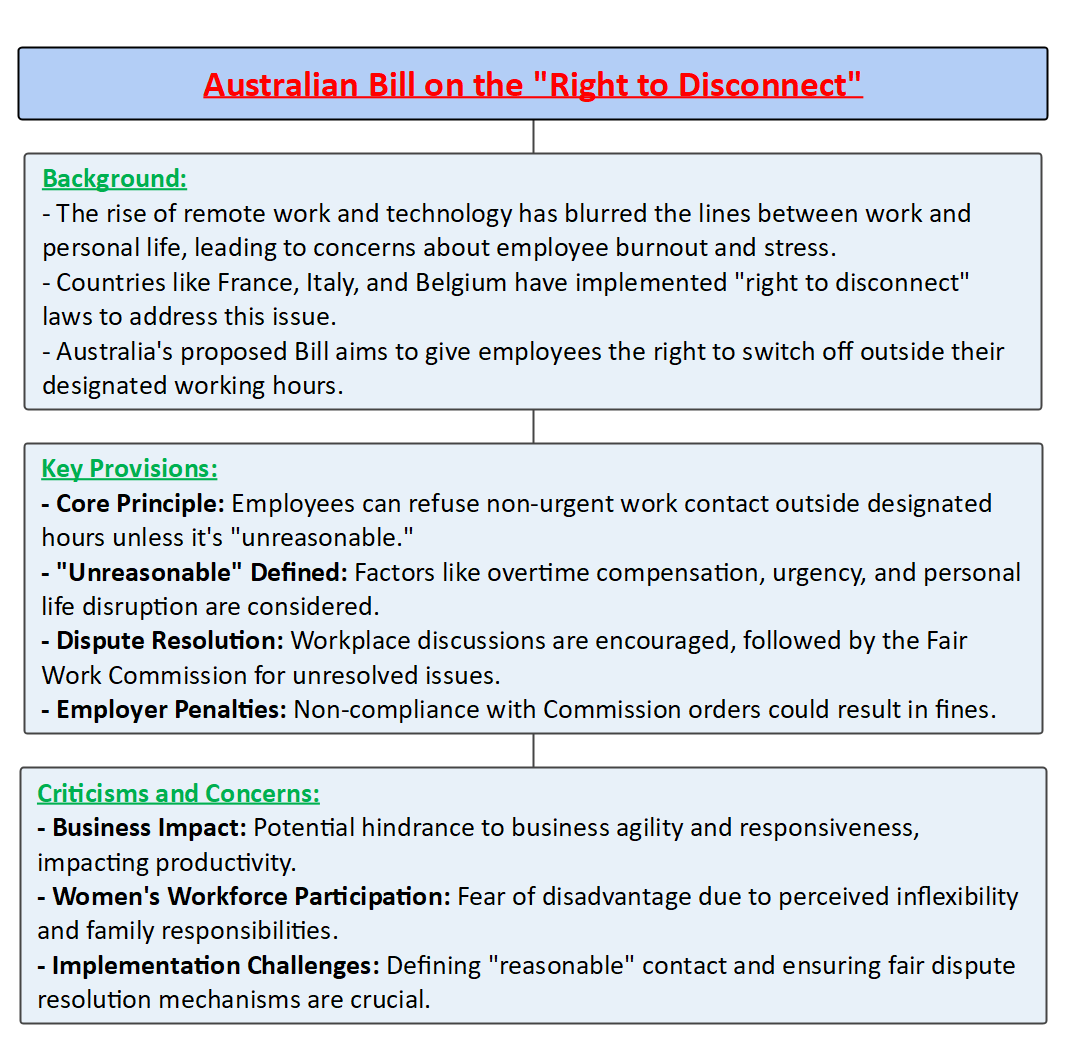Free Courses Sale ends Soon, Get It Now


Free Courses Sale ends Soon, Get It Now



Copyright infringement not intended
Picture Courtesy: https://www.linkedin.com/pulse/right-disconnect-unpacking-what-means-employers-fay-calderone-ugxac
Context: Australia's proposed legislation is introducing a "right to disconnect," allowing employees to reject work-related contact outside regular hours unless the request is considered "unreasonable."
Details
What is the 'Right to Disconnect'?
International Examples
Criticisms of the 'Right to Disconnect'
Alternative Perspectives

Conclusion
Must Read Articles:
India’s First Gig Workers Rights Bill: https://www.iasgyan.in/daily-current-affairs/indias-first-gig-workers-rights-bill
|
PRACTICE QUESTION Q. How can the "Right to Disconnect" be implemented fairly without hindering organizational productivity and efficiency, especially in fast-paced, competitive industries? Can a true "disconnect" be achieved in roles where constant availability is a core responsibility? Answer Structure: ●Define what the "Right to Disconnect" means and why it is important for workers' well-being and performance. ●Acknowledge the challenges and trade-offs of implementing it in different industries and roles, and provide some examples of how it might affect organizational productivity and efficiency. ●Discuss some possible solutions or best practices that could balance the needs and expectations of both employers and employees, such as flexible work arrangements, clear communication protocols, or digital tools that enable a smooth transition between work and personal time. ●Evaluate the feasibility and effectiveness of these solutions, and consider the potential benefits and drawbacks for both parties. ●Conclude with a summary of the main points and a recommendation or opinion on how the "Right to Disconnect" can be achieved fairly and realistically. |
© 2024 iasgyan. All right reserved